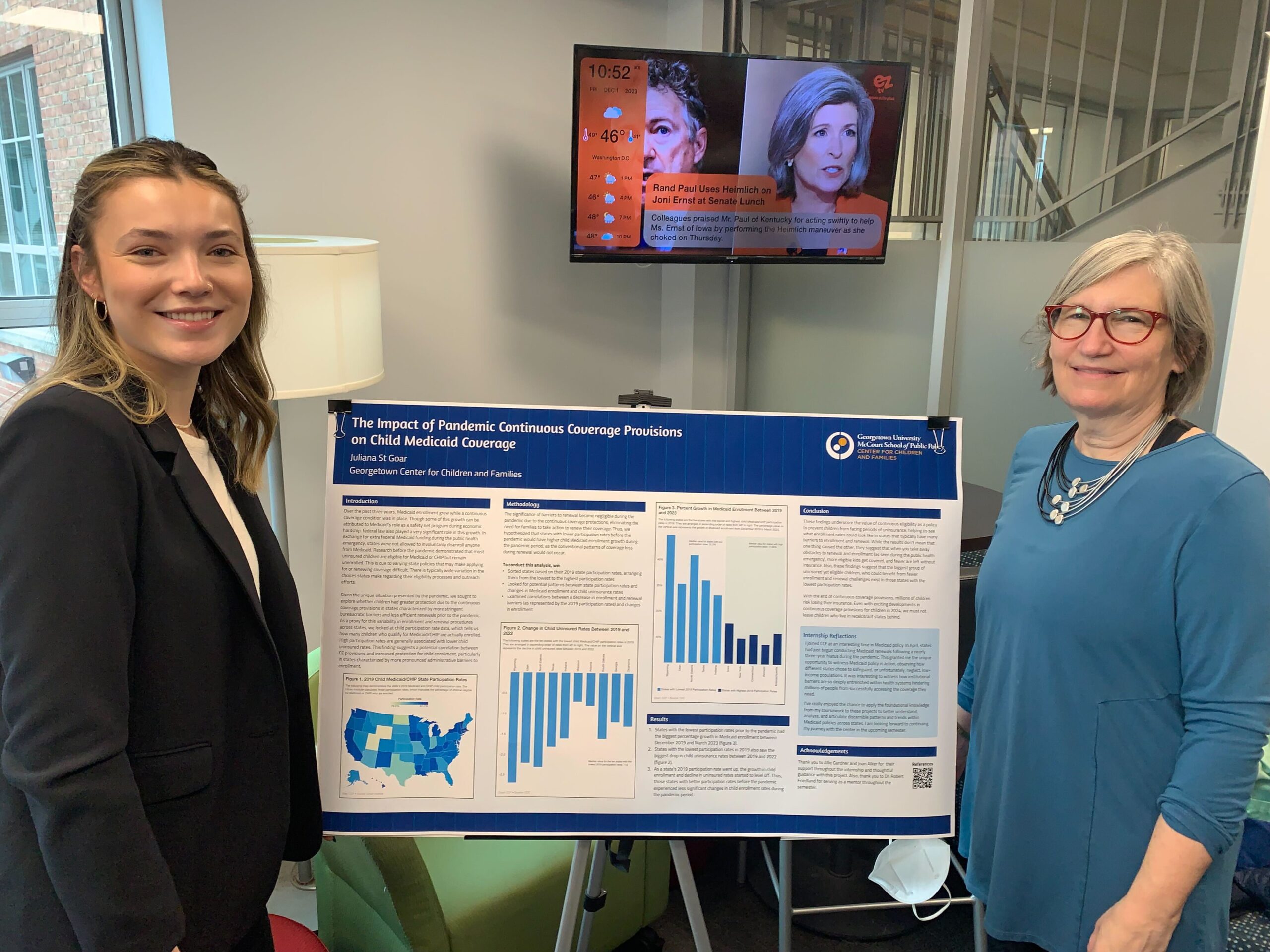By: Juliana St Goar & Joan Alker
It is well documented that over the past three years, Medicaid enrollment grew while a continuous coverage requirement was in place. Though some of this growth can be attributed to Medicaid’s crucial role as a safety net program during times of economic hardship, federal law also played a very significant role in this growth. In exchange for extra federal Medicaid funding during the public health emergency, states were not allowed to involuntarily disenroll anyone from Medicaid.
Urban Institute research conducted prior to the pandemic has shown that a majority of uninsured children are eligible for Medicaid or CHIP but remain unenrolled. A child may not be enrolled despite being eligible for several reasons, including varying state policies that may make applying for or renewing coverage difficult. Additionally, families may lack awareness or understanding of different state eligibility qualifications, which can hinder them from enrolling their children in coverage. States vary widely in the choices they make about eligibility processes and outreach efforts.
Given the unique situation presented by the pandemic and federal continuous coverage protections that were put in place, we thought it would be interesting to see if children were more protected in states that had more red tape and less efficient renewals prior to the pandemic. As a proxy for this state variability, we looked at child participation rate data from the Urban Institute, which estimates what percent of children who qualify for Medicaid/CHIP are actually enrolled. High participation rates are generally associated with lower child uninsured rates.
Looking at pre-pandemic data from 2019, state participation rates varied from 79% in Wyoming to 97.7% in Massachusetts. Since barriers to renewal became a moot point during the period of the pandemic continuous coverage protections as families did not have to act to renew their coverage, we hypothesized that states with lower participation rates before the pandemic would have higher child Medicaid enrollment growth during the pandemic period – as coverage loss at renewal would not be happening.
First, we sorted states based on their 2019 state participation rates, arranging them from the lowest to the highest participation rates. Next, we looked for potential patterns between state participation rates and changes in Medicaid enrollment and child uninsurance rates. This analysis aimed to understand whether there was a correlation between a decrease in enrollment and renewal barriers (as represented by the 2019 participation rates) and changes in enrollment.
After we completed an analysis of the data, we found three key takeaways.
1. First, states with the lowest participation rates in 2019 had the biggest percentage growth in Medicaid enrollment between December 2019 and March 2023.
2. Second, we found that states with the lowest participation rates prior to the pandemic saw the biggest drop in child uninsurance rates between 2019 and 2022.
3. Lastly, we noticed that as a state's 2019 participation rate went up, the growth in child enrollment and the drop in uninsured rates started to level off. Thus, those states with better participation rates before the pandemic experienced less significant changes in child enrollment rates during the pandemic period.
These findings underscore the value of continuous eligibility as a policy to prevent children from facing periods of uninsurance, helping us see what enrollment rates could look like in states that typically have many barriers to enrollment and renewal. While the results don’t mean that one thing caused the other, the linkages are as expected -- that when you take away obstacles to renewal and enrollment (as seen during the public health emergency), more eligible kids get covered, and fewer are left without insurance. Also, these findings suggest that the biggest group of uninsured yet eligible children, who could benefit from fewer enrollment and renewal challenges, exist in those states with the lowest participation rates.
With the end of the continuous coverage provisions, millions of kids are now losing their Medicaid coverage – especially in states like Texas, which has by far the largest number of uninsured children in the country, and is terminating large numbers of children during the unwinding period. Fortunately, a new federal law requires all states to provide one year of continuous coverage for all children in Medicaid and CHIP as of January 1, 2024, but children will have to go through the renewal process first. A growing number of states are seeking federal permission to extend periods of continuous coverage, especially for young children aged 0-6. This is a very exciting development, but eventually federal action may be needed to make sure children who live in recalcitrant states are not left behind.
Juliana St Goar is a senior healthcare management and policy major in the Georgetown School of Health.


